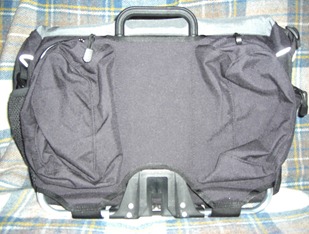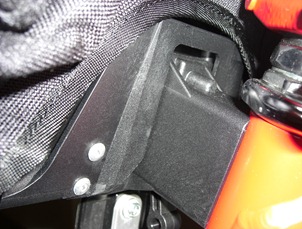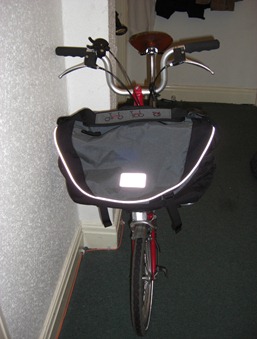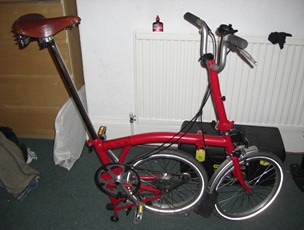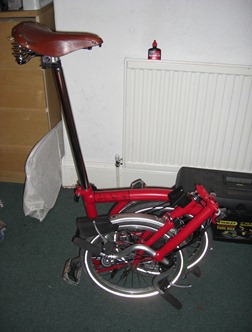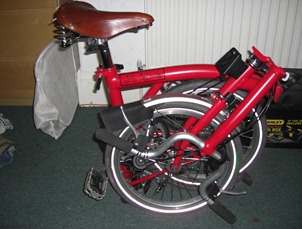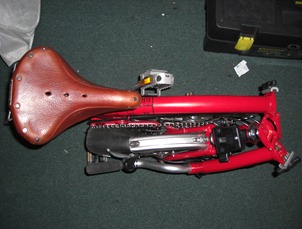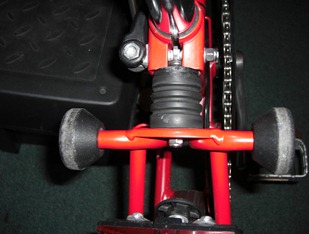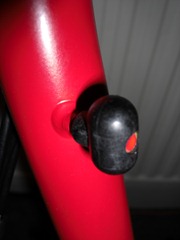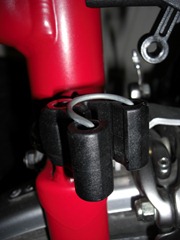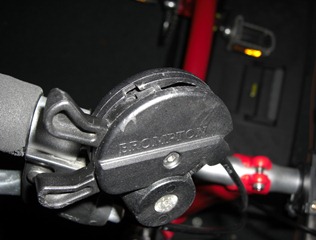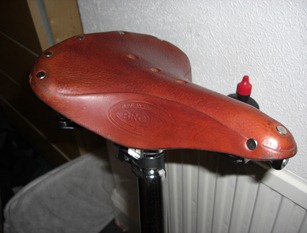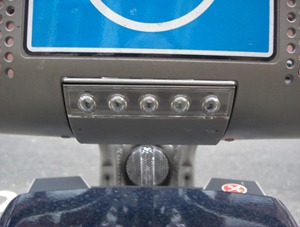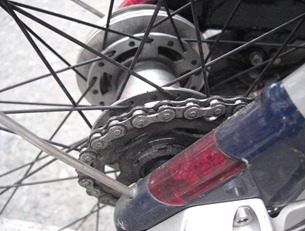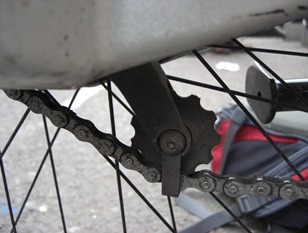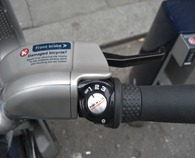I wasn’t planning on buying a dynamo hub for the Brompton until Autumn. That was until I noticed that the 2011 version of the Shimano hub/wheel is more expensive than the 2010 version (despite being the same). This is most likely due to the fact that Brompton fix the prices of their components to a certain extent, so any price differences generated by things like inflation and currency fluctuations appears as one price hike at the end of the year. For the complete wheel this resulted in an increase from around £68 for the Shimano dynamo hub wheel to around £80. Most sites had already increased their prices, but I found a site I hadn’t used before; Bicycle Magic (Price has since increased here too). It took a bit to dispatch, but otherwise my experience with the new supplier was positive.
I decided that I would run the B&M Lumotec Lyt which was previously attached to the Yuba Mundo with my new hub dynamo; the light will always be on when the bike is moving because it is the un-switched bottle dynamo version, but this won’t be a problem now I know that the drag from hub dynamos is effectively imperceptible even under load. The fact that the light is LED-based means that its operational lifespan is greater than mine, so I don’t have to worry about burning it out. Before autumn I will acquire a new light for the Yuba, or an improved one for the Brompton depending on the state of my finances (I’d love to try a 60 lux Cyo).
The replacement front wheel is functional, the hub isn’t particularly pretty like the polished hub shells from Sturmey-Archer. If you are particularly wealthy, Brompton also offer a SON hub dynamo option (also in super-light, for weight-weenies), which has the advantage of improved efficiency and increased prettiness.
The wheel fixes into the fork using an allen bolt held in place in a quick-release type configuration. The only benefit I can see in this arrangement is that it is easier to replace than a traditional axle if you accidentally strip the threads. Getting the Brompton tyres off the rim is challenging, but with a combination of brute force and swearing it can be done (Later on the same day I ended up replacing both tyres on both Beatrix and Tallulah Taboo’s Twenties too, making a total of 5 difficult tyre removal/replacements in one evening, I now have quite sore fingers).
The dynamo connections are similar to those used in the Sturmey-Archer hub (X-FDD), although the plug is a more sturdy looking two-piece affair this time. The wire connects to spade connectors on the front lamp, which in turn has spade connectors to power the rear light.
The bracket of the Lumotec Lyt positions the lamp in such a way that it interferes with the luggage block on the Brompton. I believe there are specialist Brompton brackets for some B&M lights specced by Brompton, such as their basic halogen lamp, or the top-of-the-range IQ Cyo. However, rather than forking out for a new bracket, I decided to gently adjust the existing one with a hammer. It turned out this still didn’t seem to be enough, so I decided to reverse the modified Lyt bracket and bolt it onto the original reflector bracket it replaced:
The result isn’t tremendously elegant but it works well and doesn’t interfere with the luggage block. The wire to the rear light was run along the front brake cable until it met the cable gatherer, which clips the front and rear brake cables and gear cable (or cables if you have a 6 speed).
From here I wound the rear light cable along the rear brake cable which ended at an ideal position to connect to the rear light.
On initial testing the arrangement works perfectly, with the lights coming on even at walking speed. In their current arrangement, the lights will always run when the bike is moving, but I can’t see this being much of a problem really, and may even be advantageous.

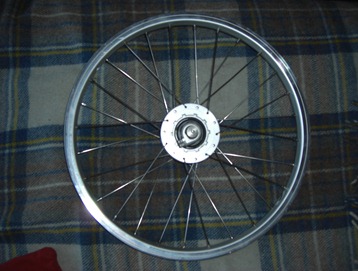
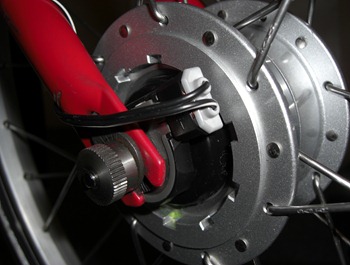
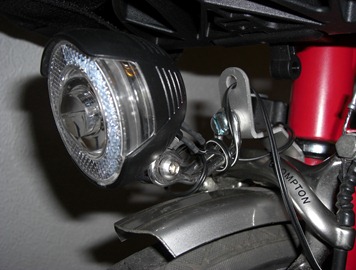
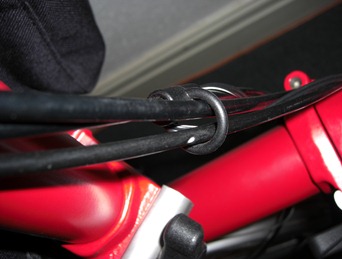

![IMAG0041web[5] IMAG0041web[5]](http://lh5.ggpht.com/_R48YSqUGDr8/TWKWLfM1ixI/AAAAAAAABFs/1EqUZeN5Hb8/IMAG0041web%5B5%5D_thumb%5B2%5D.jpg?imgmax=800)
![IMAG0065[5] IMAG0065[5]](http://lh4.ggpht.com/_R48YSqUGDr8/TWKWMrXf-PI/AAAAAAAABF0/XhowPWKvrcY/IMAG0065%5B5%5D_thumb%5B2%5D.jpg?imgmax=800)







